
Support Team
Feedback:
support@nextpcb.comModern Printed Circuit Board(PCB) designers are creating PCBs geared towards increasingly high performance, and as a result, power densities are exponentially increasing. With the increase of power usage in the PCB, the heat generated in the PCBs also increases. This brings out the necessity of dealing with heat in PCBs. Also, specific applications require PCBs to operate under high temperature environments to manage and transmit high amounts of heat.
Traditional PCBs have a lower tolerance for heat. Reaching the maximum level may add impact their performance. And, prolonged exposure to heat will cause irreparable damage. The longevity of the electronics in which PCBs and their components are incorporated depends on how well thermal loads are managed. This is an important factor that subjects manufacturers' attention when designing PCBs used in autos, LED lighting, and alternative forms of energy. In these scenarios, the embedded PCBs tend to get open to high-temperature levels, higher than a laptop computer's circuit board.
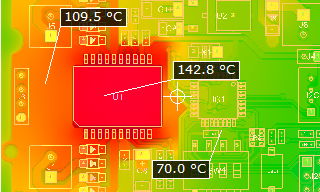
High-Temperature PCBs are printed circuit boards made from materials with a Glass Transition Temperature higher than 170 °C. Glass Transition Temperature(Tg) is the temperature above which the material is turned from a hard and relatively brittle 'glassy' state into a viscous or rubbery form. As a good rule of thumb, PCBs should be designed for continuous thermal load at temperatures 25 degrees below Tg. In case your PCB will be operating at 130 degrees Celsius or higher, it is recommended to use a material that is considered a high Tg material.
In PCB manufacturing which refers to a glass-reinforced epoxy laminate material, manufacturers use FR4 as the most common material. It contains woven fibreglass along with a flame-resistant binder composed of epoxy resin. Standard FR4 Tg lies between 130- 140 degrees Celsius, and High Tg FR4 is available for high-temperature PCB applications. Not only do high Tg FR4 boards handle higher temperatures, but they also have higher moisture resistance.
When power components or other heating devices are in the design, using PCBs with metal cores is one of the most popular techniques to avoid overheating. Insulated metal core PCBs, commonly known as MCPCBs or IMPCBs, are also possible. Using of larger surface area in the metal layer makes it easier for the heat to escape. When you use a metal PCB core, pay attention to vias to drilled below power or other heat-generating components.
Employing a thicker metal core with vias will disperse more heat than without using these two techniques side by side since vias enable the use of thicker metal cores. As we mentioned earlier, an insulated metal core is a PCB core design option. Here, a thin glass or resin layer insulates the core. The insulating mounting's design will keep heat energy from redistributing into the electrical components on the PCB and instead directing it through the core to the atmosphere. IMPCB frequently engages in applications where the power components are present.
From what we have discussed so far, it must be clear that Material selection is a vital part of designing PCBs that can withstand high temperatures. However, materials by themselves will not be enough to offset the bad design choices you’ve made along the way. Heat management must also be a key consideration when designing a PCB.
There are three main ways to heat loss in PCBs. They are Radiation, Convection, and Conduction. The design team must consider all three when regulating system and component temperatures.
Phenomenon Radiation is referring to the emission of energy from electromagnetic waves. We often only associate it with glowing objects. Although in reality, any object with a temperature higher than absolute zero emits thermal energy. Electromagnetic waves must travel a somewhat direct path from the source to remove heat effectively. Reflective surfaces prevent photons from leaving, forcing many of
them to return to their source. In a worst-case scenario, reflecting surfaces could combine to create a parabolic-mirror effect. This would concentrate the radiated energies from several sources and focus them on one hotspot of the system. So it will lead to resulting in serious problems. The temperature of the source (in absolute values, raised to the fourth power), the material's thermal emissivity, and the radiation-emitting surface area are the main determinants of thermal radiation.
Under the phenomenon of Convection, the heat will transfer via fluids such as air, water, or another substance. A certain amount of convection occurs "naturally". The fluid absorbs heat from a source, loses density, rises to a heat sink, cools, gains density, sinks back to the source, and repeats the cycle. Using a fan or a pump may speed up the convection. The temperature difference between the source and coolant, the ease with which the source transfers heat, the ease with which the coolant absorbs heat, the flow rate of the coolant, and the surface area over which the heat is transported are the main variables impacting convection. Liquids significantly more easily absorb heat than gases.
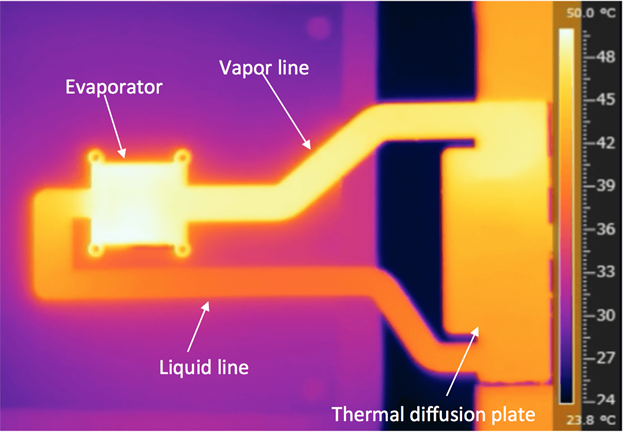
Conduction is the direct transport of heat from the heat source to the heat sink. The amount of heat transported per unit of time is the temperature difference between the source and sink. Moreover, the ease with which heat flows through a thermal conductor is related to various aspects. They are electrical current, including voltage, amperage, and conductance.
Since both represent molecular or atomic motion types, the characteristics that make an excellent electrical conductor also tend to create good thermal conductors. For instance, copper and aluminium are both tremendous conductors of heat and electricity. Large conductor cross-sectional areas increase heat conductivity and electron conductivity. Additionally, a path's length can degrade the conductor's effectiveness.
The primary method used to remove heat from a circuit board is typically to route it to a suitable heat sink. For that, it should be concerned, where convection disperses it into the surrounding air. While some heat is radiated and wafted straight from the source, the majority is often taken away through pathways known as "heat vias" or "thermal vias." PCB heat sinks are relatively large, highly emissive surfaces bonded to conductive (like copper or aluminium) backings via a labour-intensive process. Frequently corrugating or finning are steps for maximizing the surface area. The machine's chassis may also be connected to PCB heat sinks to utilize its surface areas. Fans often provide the flow of cooling air. In severe circumstances, the air has the ability to act as the cooler in a gas-liquid heat exchanger.
When it comes down to it, a designer's options for managing heat include decreasing power densities, removing or isolating the device from heat sources, including larger fans and liquid cooling systems, increasing the size and accessibility of heat sinks, using more prominent conductors, and using exotic materials that can withstand higher temperatures. They are the main concerns at the outset of idea development and design since they have an impact on the cost, volume, and weight of the complete system.
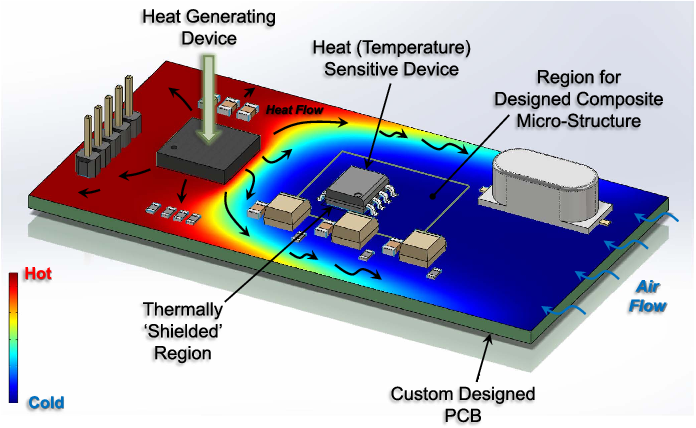
Standard fabrication techniques have limitations, and PCB producers are well aware of this. They work to stay current with design issues by introducing new PCB types specifically made for high temperatures. While these PCBs use heavy copper circuits to increase their current-carrying capacity. Furthermore, to reduce I2R losses, their specifics can differ significantly.
We see more and more "heavy copper" and "extreme copper" boards, which, as the names suggest, use heavier, thicker copper layers than typical PCBs. If heavy (or extreme) copper is not necessary everywhere, ordinary and heavy copper circuits can couple to transport power and signal currents on a single board.
Heavy/extreme copper PCB fabrication is comparable to conventional PCB fabrication, except for unique etching and plating procedures. The benefits include increased mechanical strength, lower I2R losses, lower I2R losses, higher current carrying capacities, and the opportunity to add features like on-board planar transformers and high-efficiency on-board heat sinks (owing to the ability to combine heavy and standard circuits on a single board). As usually in bonded heat sinks, manually fabricating is not an essential factor for the onboard heat sinks. Therefore this is a low-price technique.
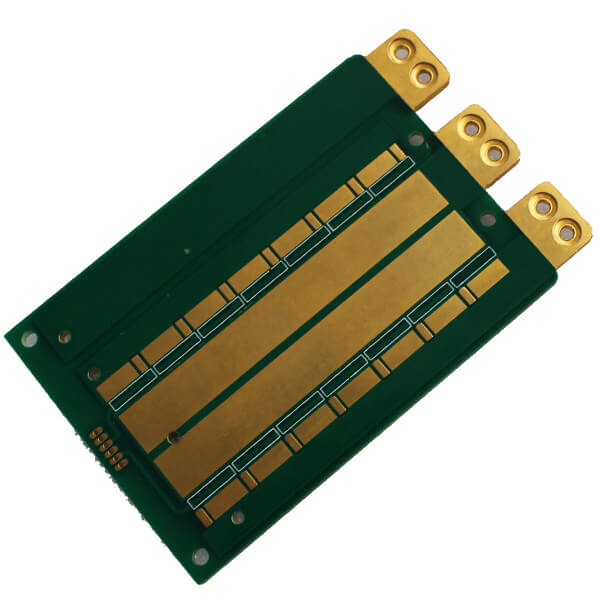
Instead of using heavy/extreme copper plating, a different strategy is to implant heavy rectangular copper wires. The benefits compared to standard PCBs are comparable to those of heavy/extreme copper PCBs and include the ability to combine power and signal currents, improved heat dissipation, increased strength, removal of connectors, fewer layers, and a smaller total system volume. Some assert that soldering a wire-embedded board is simpler than a thick copper board. However, you have to determine this case by case.
Computational fluid dynamics (CFD) software connected with standard PCB design packages, such as Mentor Graphics' FloTherm PCB®. Old rules-of-thumb and back-of-the-napkin heat computations lose accuracy as performance boundaries get change according to the push exerted by modern designers. When appropriately used, decent CFD software, particularly one created expressly for PCB or electronic cooling applications, can reduce time to market, enhance design efficiency, alleviate potentially expensive errors, and eliminate a lot of guesswork.
Power Delivery Network(PDN) Analyzers can simulate current flow through any nets you identify as being in the critical path, either simultaneously or sequentially. Ensuring the dependability and safety of your product, the peak current densities and excessive current vias get subject to quick discovering and highlighting. The voltage from a power source will deliver to downstream voltage regulator modules by your circuit board's PDN. There are modules that help with power regulation and distribution to the next component. But, how much power and the amount of voltage are wasted through your board depends on the layout of your PCB. You can obtain a current density map of your PCB to identify potential hotspots. So in the case of high-temperature PCBs, whether they comply with the IPC 2152 standards to ensure that excessive temperature elevations have not resulted.
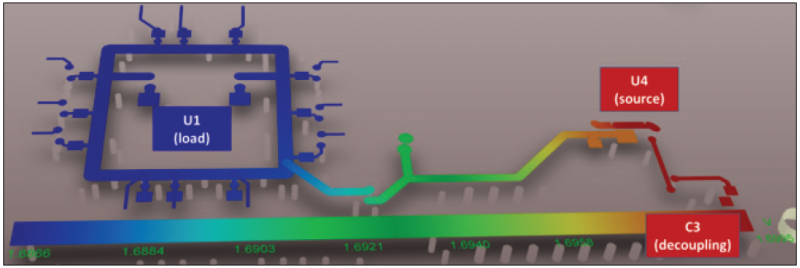
Their thermal loads directly impact PCB performance and longevity. Due to this, managing heat dissipation, or the lack thereof, is crucial for designing and producing PCBs. Everything must be considered, including the heat produced by the PCB's components, the environment around it, and its intended function. Researchers are still working on research studies related to components and circuits that can disperse heat and moisture more effectively. Designers must limit heat loss and utilize extra removal methods when natural cooling is insufficient to avoid thermal issues. It's important to consider component requirements, PCB layout, PCB dielectric material, and environmental factors while creating a thermally efficient design.
Still, need help? Contact Us: support@nextpcb.com
Need a PCB or PCBA quote? Quote now